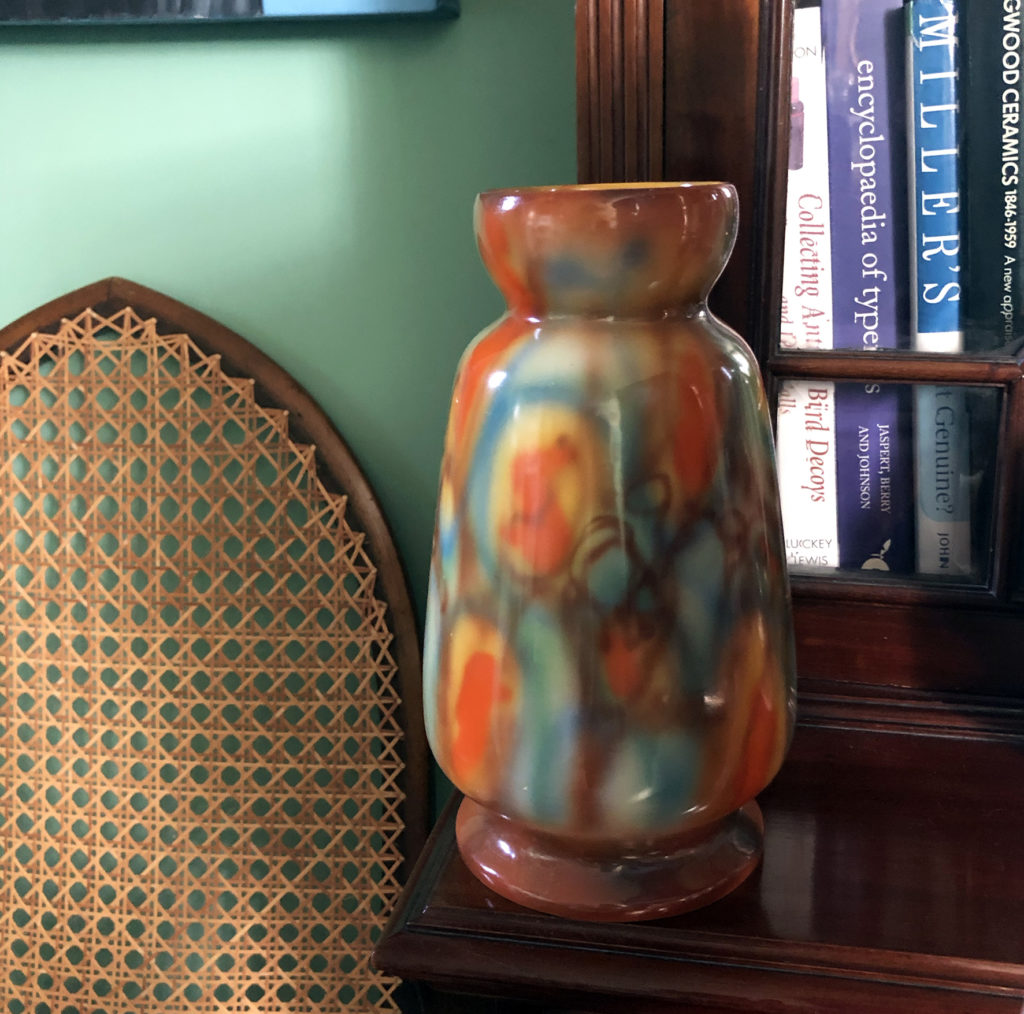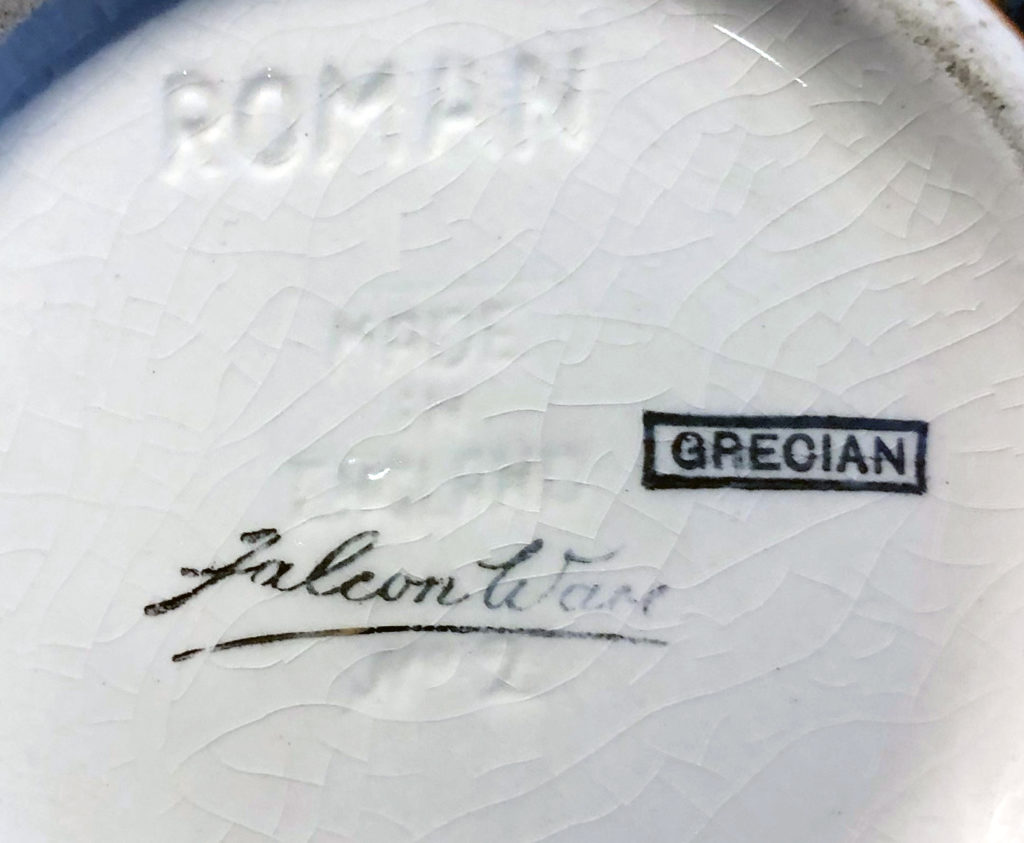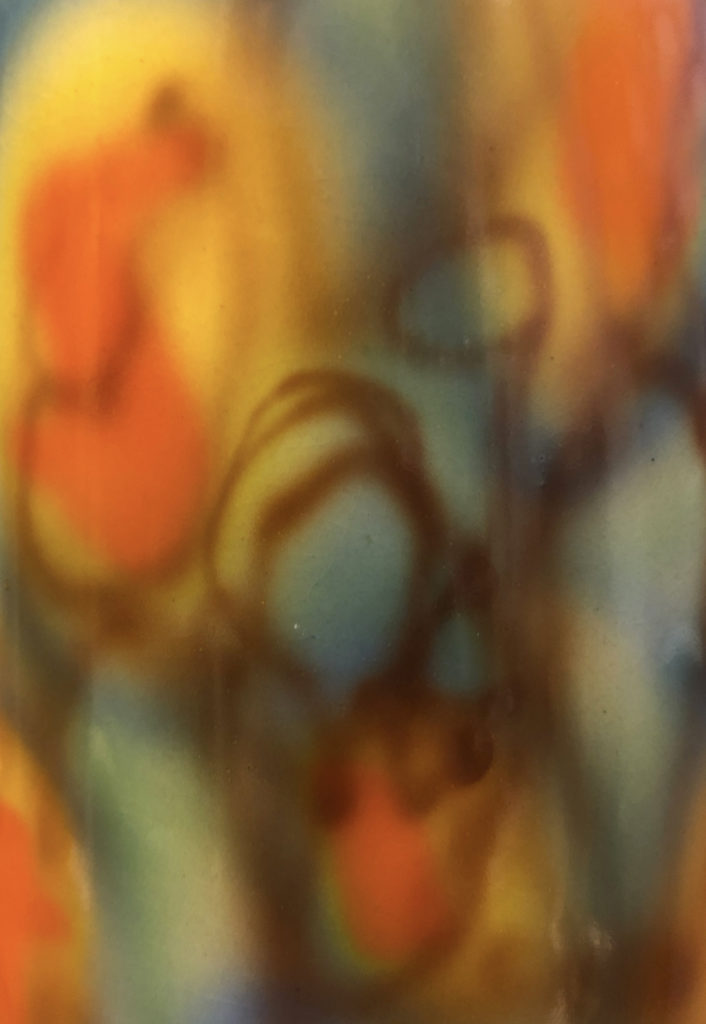Last month, I was lucky enough to be asked to be the special guest at the biannual SylvaC collectors’ event in Peterborough. After a thoroughly fascinating day with friendly, warm and dedicated collectors, I was presented with a thank you gift of a piece of SylvaC for my collection – how incredibly kind! I had admired this Grecian range vase when it was part of an exhibition on display, but never expected to be going home with it!

Well, I say SylvaC, but it was actually made at Thomas Lawrence’s Falcon Pottery, hence the FALCONWARE backstamp on the base (below). In 1938, Shaw & Copestake (1894-1982), the long-established pottery behind the SylvaC brand, acquired the Falcon Pottery and the two companies merged under the SylvaC name.
The brand became widely known for producing ‘fast fashion’ ceramics in whatever style was fashionable at the time – all were affordable to the average man or woman on the street looking for something in vogue. Apart from their animal figurines, their thousands of designs were inspired by different styles from classic High Victorian to Art Deco and mid-century modern, and makers from Beswick and Carltonware to Wedgwood, and even 1950s-70s West German ceramics.
The Grecian range was introduced in 1938 and is appealing to me for a number of reasons. Firstly, the colours, which shout so much about the bright and jaunty fashions of the Jazz Age, but are also so very contemporary. They look as fresh and modern today as they did over 80 years ago – I love how the greens and oranges work so well against the Farrow & Ball ‘Arsenic’ walls of our living room. Secondly, the technique is interesting – the glazes were airbrushed on using spray guns, in a process known as aerography. It was a popular method of decorating ceramics from the early 20th century onwards and, for this range, created a totally random marbled pattern, making each and every piece unique.
The Grecian decor was applied to a number of different shapes, with jugs being the most commonly seen. My example has its shape name impressed into the base – ROMAN. There were also a few Art Deco shapes, with ribbed or shaped bodies and geometric handles, but I think it works best on plain, unfussy bodies so that the pattern, which is effectively an abstract painting, can be shown off to its best. Always look all over the body as wear and tear over the years will show up as fine white lines or dots, where the sprayed finish has been scratched away. Prices vary from as little as £5 to around £70 for a great Art Deco form.
But what really makes it for me is the rest of the story behind it. It’s a comparatively rare range as it was only produced from 1938 until just after 1939. The reasons? Firstly, wartime restrictions soon limited both raw materials and the public’s appetite for such pieces. But, secondly and rather poignantly, most of the company’s aerographers were young men. When war broke out, they were called away to fight, so the range was discontinued. Tastes had changed by the late 1940s, and few of these men were lucky enough to return from the war, so it was never reintroduced.
The SylvaC Collectors’ Circle can be contacted at: mickcollins2@hotmail.co.uk
To attend a SylvaC Collectors’ Event, please contact: sylvaclady@btinternet.com



